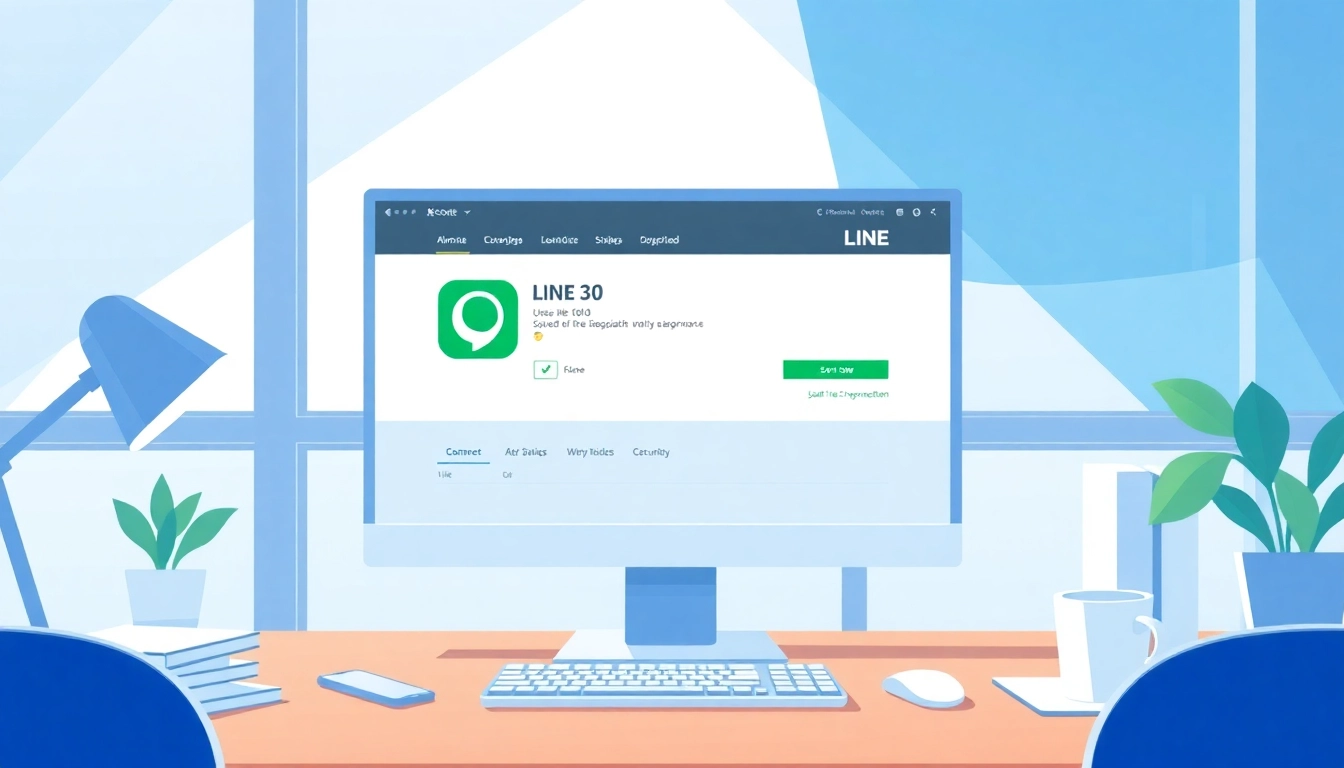Understanding AI Email Writers
What is an AI Email Writer?
An AI email writer utilizes artificial intelligence to assist in the drafting, refining, and optimizing of email communication. Leveraging sophisticated algorithms and natural language processing (NLP), these tools analyze context, tone, and style. They generate text that resonates with targeted audiences, ensuring clarity and engagement. By automating the writing process, businesses and individuals can save significant time and effort, streamlining their email correspondence workflows. AI email writers can create everything from simple replies to complex marketing campaigns, adapting their output based on the input provided. This technological evolution is increasingly pivotal in enhancing productivity and communication quality.
Benefits of Using AI for Email Drafting
There are numerous advantages to incorporating an AI email writer into your communication toolkit:
- Time Efficiency: By automating routine tasks, AI email writers allow users to focus on more strategic activities.
- Consistency: Ensures a uniform tone and style across communications, reinforcing brand identity.
- Email Personalization: Capable of segmenting audiences and tailoring messages to fit different customer personas, enhancing engagement.
- Error Reduction: Minimizes chances of grammatical errors or typos, leading to more professional communication.
- Data-Driven Insights: Analyzes previous email performance to improve future communication, driving higher open and response rates.
Common Features of AI Email Writers
AI email writers come equipped with a variety of features designed to meet different user needs and objectives. Some common functionalities include:
- Template Generation: Automatically creates email templates based on common structures or previous correspondence.
- Language Variability: Offers multiple styles and tones, helping to match the voice of different communicators.
- Integration Capabilities: Works seamlessly with other tools such as CRM systems and email clients for an efficient workflow.
- Follow-Up Automation: Generates automatic reminders and follow-up emails based on user-defined triggers.
- Performance Analytics: Provides insights into engagement metrics, including open rates, click-through rates, and reply rates.
Choosing the Right AI Email Writer
Key Factors to Consider
When evaluating AI email writers, it’s essential to assess several key factors to ensure the chosen solution aligns with your specific needs:
- Ease of Use: The interface should be intuitive, allowing users from all backgrounds to use it effectively without extensive training.
- Customization Flexibility: Look for tools that enable personalized settings and templates to suit your organization’s style and branding.
- Integration Features: The ability to sync with existing platforms, such as Google Workspace or Outlook, is critical for maintaining workflow efficiency.
- Budget Considerations: Pricing should match the scale of your operations, considering both subscription costs and the potential ROI.
- Support and Resources: Comprehensive customer support and educational resources can greatly enhance user experience and troubleshooting.
Popular AI Email Writers on the Market
Numerous AI email writers are currently available, each with unique features and benefits. Here are a few prominent options:
- Grammarly: Primarily known for its grammar-checking capabilities, it also offers an AI-powered email writing assistant.
- Copy.ai: This tool excels in generating creative email content aimed at marketing and outreach.
- Mailchimp: While primarily an email marketing platform, it incorporates AI features to optimize email campaigns.
- Writesonic: Offers customized email generation for varied business needs, from feedback requests to promotional campaigns.
- Jasper AI: Known for its conversational tone, Jasper helps in writing engaging email content that captures attention.
Comparison of Features and Pricing
When selecting an AI email writer, comparing features and pricing across potential candidates is crucial. Consider aspects such as:
- Pricing Structure: Identify whether the tool offers a free tier, which could be beneficial for small businesses or startups.
- Feature Set: Create a checklist of essential features such as template generation, analytics, and language support to evaluate each platform accurately.
- Scalability: Ensure the tool can grow and adapt to the changing needs of your business.
- User Reviews: Research experiences from current users to gauge the effectiveness and reliability of each platform.
How to Optimize Your Emails with AI
Crafting Effective Email Templates
One of the primary advantages of utilizing an AI email writer is its ability to craft effective email templates. Here are steps to consider:
- Identify the Purpose: Establish the goal of your email. Is it to inform, persuade, invite, or engage?
- Use Clear Subject Lines: The subject line is your first chance to grab attention. AI tools can help generate compelling options based on the content.
- Define Your Audience: Tailor your message to the specific demographics you are reaching. AI tools can create segments for varied messaging.
- Include a Clear Call to Action: What do you want your reader to do after receiving your email? Ensure this is evident in the communication.
- Solicit Feedback: Once the template is generated, consider running it by team members or colleagues for further refinement.
Best Practices for Input Prompts
To get the most accurate and effective output from AI email writers, adhere to best practices when crafting input prompts:
- Be Specific: Provide as much contextual detail as possible about the email’s purpose and audience.
- Use Examples: If your brand has a previous email that performed well, providing it as a reference can help the AI generate similar content.
- Iterative Feedback: Use the email drafts produced to refine your prompts over time, leading to better outcomes.
- Anatomy of Email Components: Break down each component—subject, body, and closing—to guide the AI in delivering focused outputs.
- Testing Variations: Experiment with multiple input prompts to understand how variations affect the final output.
Improving Engagement with AI Insights
An AI email writer is equipped with data analytics capabilities that can tremendously boost engagement rates. Here’s how to leverage these insights effectively:
- Analyzing Open Rates: Use A/B testing to determine which subject lines and email designs yield the highest open rates.
- Identifying Optimal Send Times: AI tools can analyze past engagement metrics to suggest the best times to send emails.
- Personalization Metrics: Evaluating how different personas respond to tailored content can offer insight into future communication strategies.
- Monitoring Click-Through Rates: Measure engagement beyond opens to refine content and calls to action.
- Feedback Loops: Implement systems to gather user feedback on emails to iterate on content further.
Social Proof and User Reviews
Case Studies of Successful Implementations
Numerous organizations have successfully integrated AI email writers into their workflows. Here are a few illustrative examples:
- E-commerce Business: A retail company deployed an AI tool for promotional emails, resulting in a 35% increase in conversion rates due to tailored product recommendations based on historical data.
- Non-Profit Organization: Utilizing AI for donor outreach led to a 50% improvement in open rates by customizing emails based on donor engagement history.
- Educational Institution: An online learning platform used an AI writer to automate course announcement emails, which significantly reduced manual workload and increased student enrollment by 20%.
Gathering User Feedback
To continuously refine your email strategy, gathering user feedback is essential. Implement these approaches:
- Surveys and Polls: After an email campaign, follow up with a survey for recipients to gauge their satisfaction and engagement levels.
- A/B Testing: Regularly test different formats and contents to understand preferences and optimize future communications.
- Performance Analysis: Analyze response data to infer which elements of your emails resonate most with your audience.
Adapting AI Tools for Continuous Improvement
Adapting AI tools based on ongoing performance results can lead to substantial improvements in email effectiveness. Here are strategies to consider:
- Review and Adjust Regularly: Regularly assess output quality and adjust parameters to better align with organizational goals.
- Incorporate User Experience Trends: Stay updated with industry trends and user preferences to keep your emails relevant.
- Enable Real-Time Learning: Utilize AI capabilities that learn from user interactions and feedback to continuously fine-tune their outputs.
Future Trends in AI Email Writing
Advances in Natural Language Processing
The future of AI email writers looks promising, particularly with advancements in natural language processing (NLP). These advancements will facilitate:
- Context-Aware Communication: Future iterations of AI email writers will understand context better, enabling them to draft emails that fit seamlessly into ongoing conversations.
- Enhanced Personalization: Expect breakthroughs that allow for hyper-personalized content that reflects the recipient’s previous interactions, preferences, and behaviors.
- Emotion Recognition: AI may evolve to assess emotional tone in communications, crafting responses that are empathetic and appropriate.
Integration with Other Digital Tools
The integration of AI email writers with various digital tools and platforms will become increasingly sophisticated. Future improvements may include:
- Seamless CRM Integration: Enhanced capabilities for syncing email communications with customer relationship management systems to ensure a holistic view of customer interactions.
- Collaboration Platforms: AI email writers may work more closely with collaboration tools, allowing teams to draft, share, and refine emails in real-time.
- Multi-Channel Marketing Automation: AI tools will likely integrate with social media and SMS, ensuring cohesive messaging across multiple platforms.
Ethics and Privacy Considerations
As with any technology, the implementation of AI email writing tools brings with it ethical and privacy considerations that must be addressed. Key areas include:
- Data Privacy: Ensuring that user data is handled transparently and securely, in compliance with regulations such as GDPR.
- Ethical AI Usage: Organizations must ensure that AI-generated communications do not manipulate or deceive recipients. Ethical guidelines should be established and upheld.
- Transparency in AI Algorithms: Clear communication about how AI algorithms work and how they influence email content should be provided to users.















Leave a Reply